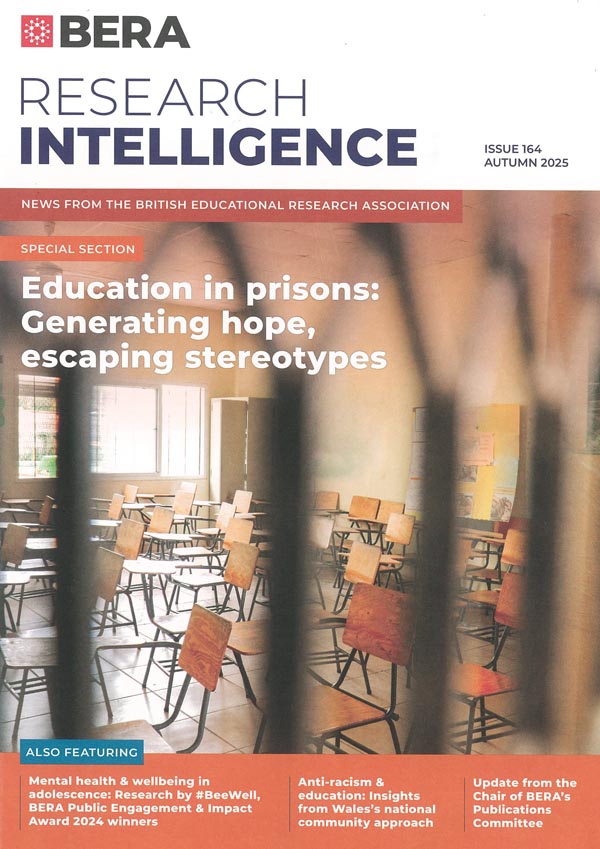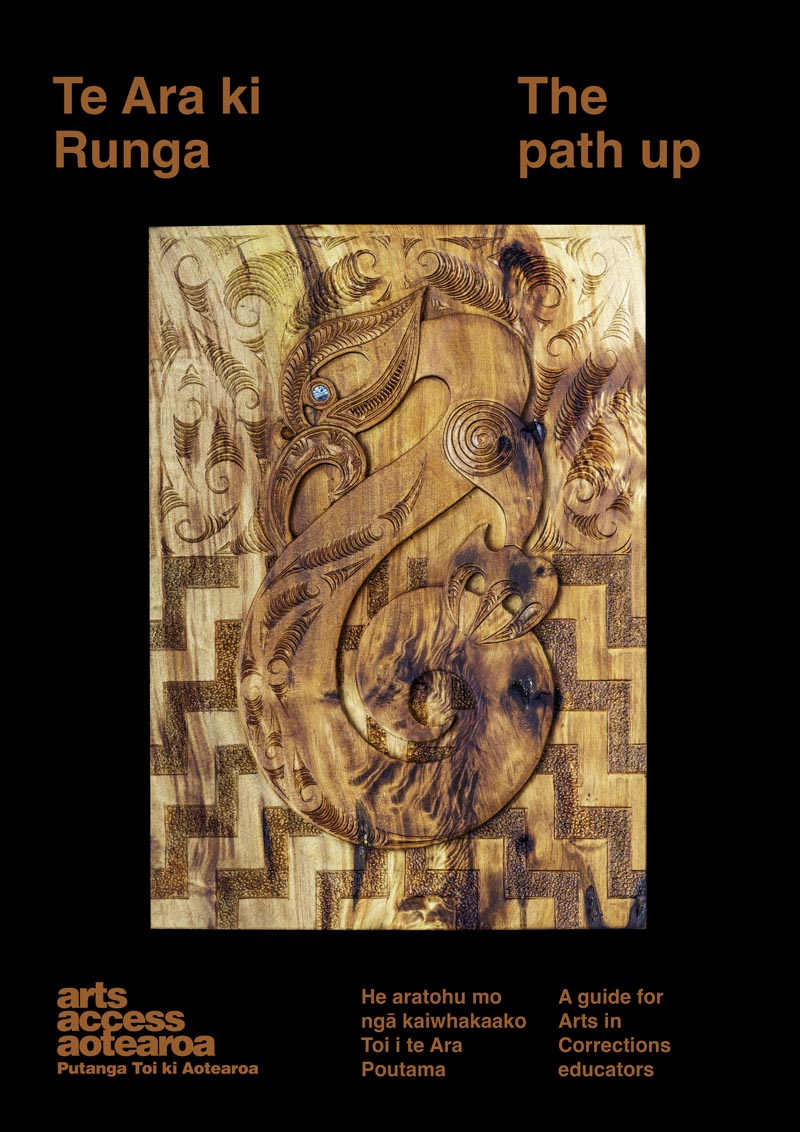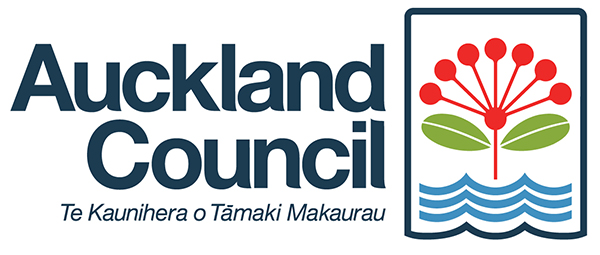“When Māori connect with their whakapapa, their own ancestry, their iwi and hapū, and with their people, then rehabilitation’s on a faster track. If people who are teaching arts programmes in prisons don’t understand the value of whakapapa and connections then there’s less impact,” says Neil Wallace in a conversation with Kristie Mortimer.
Neil Wallace is Arts in Corrections Advisor at Arts Access Aotearoa, and Kristie Mortimer is a New Zealand dance educator and postdoctoral researcher at Nord University in Norway. Together, they contributed an article to an international magazine, produced by the British Educational Research Association (BERA).
 BERA undertakes educational research in the UK. Its magazine, Research Intelligence, reaches 3000 members across 60 countries.
BERA undertakes educational research in the UK. Its magazine, Research Intelligence, reaches 3000 members across 60 countries.
The autumn issue of the magazine has a special focus on education in prisons. The article is reproduced below.
Voluntary arts education plays a growing role in prison-based rehabilitation in Aotearoa New Zealand. Community-based artists and educators deliver creative programmes that support identity restoration, skill development and reintegration.
Although many programmes are delivered voluntarily without formal funding, they are increasingly aligned with the strategies of the Department of Corrections and contribute meaningfully to rehabilitation and reintegration goals.
Hōkai Rangi, the Department of Corrections’ organisational strategy, outlines six focus areas, including cultural identity, family connection and dignity-centred practice. It prioritises outcomes for Māori, who are disproportionately represented in the prison population due to historic structural inequities and intergenerational trauma.
Wāhine: E Rere Ana Ki te Pae Hour Women’s Strategy 2021–2025 further calls for gender-responsive, trauma-informed programmes that address the realities faced by women in prison, including experiences of violence, caregiving responsibilities and social disconnection.
 Voluntary arts practitioners are responding to these priorities with increasing structure and care. A new best-practice guide, “Te Ara ki Runga The Path Up”, developed by Arts Access Aotearoa, supports safe, culturally competent delivery in Corrections settings.
Voluntary arts practitioners are responding to these priorities with increasing structure and care. A new best-practice guide, “Te Ara ki Runga The Path Up”, developed by Arts Access Aotearoa, supports safe, culturally competent delivery in Corrections settings.
Although newly introduced, the guide reflects a wider shift towards principled, strategic creative practice that meets system expectations while maintaining community values.
Beyond wellbeing, the arts also support the development of transferable skills that are essential to rehabilitation and reintegration. Creative work requires focus, planning and discipline. Participants must engage in problem-solving within constraints and practise clear communication to express ideas or collaborate with others.
These skills are directly applicable to life outside prison, improving employment readiness, relationship building and social participation. When these outcomes are achieved, communities benefit.
Arts programmes develop essential life skills
Through participation in arts programmes, individuals develop essential life skills, such as problem-solving, self-discipline and communication. Creative projects require sustained focus, decision-making and the ability to express ideas clearly – skills that are transferable to work, relationships and wider community engagement.
As people build these capacities, they are better equipped to avoid behaviours that cause harm to themselves and to those around them, contributing to stronger and more resilient communities.
Recognition of this work should reflect its real-world impact. The Department of Corrections has shown leadership by embedding cultural values and wellbeing into its strategic direction while community practitioners are contributing expertise, consistency and care.
Greater recognition from within the system and wider society would help to sustain and grow volunteer delivery. Importantly, it would ensure the arts are embedded into national conversations about what supports safer and more connected communities.
Read "Connecting through arts education in prisons" by Runa Hestad Jenssen, Nord University, Norway, also published in the autumn issue of "Research Intelligence".


